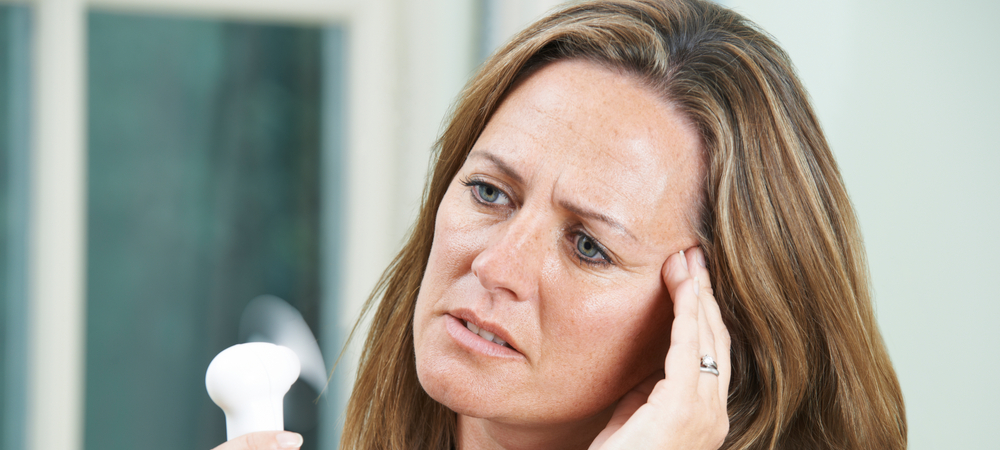
What is menopause?
Menopause refers to the time in a woman's life when she stops having a menstrual period and is no longer fertile. The time leading up to menopause is called the menopausal transition, or perimenopause.
During perimenopause, a woman's ovaries start to produce less estrogen and progesterone. Changes in these hormones cause symptoms of menopause. Periods occur less often and eventually stop. Although this typically is a gradual process that happens over time, in some cases, a woman's periods will stop suddenly. Throughout perimenopause, ovulation—the release of eggs from the ovaries—also occurs less and less frequently.
Menopause is the point at which a woman has not had a period in 12 consecutive months. The time after menopause is called postmenopause, a phase that lasts for the rest of a woman’s life.
All women experience menopause, usually between ages 45 and 55. The average age of menopause is 51, but it occurs earlier in some women. Women who smoke may go through menopause earlier than women who don't smoke.
However, perimenopause can begin several years earlier when levels of estrogen and progesterone first begin to fluctuate. Surgical or medical menopause is the term for a decrease in estrogen that is a result of surgery to remove the ovaries or uterus, or medical treatments such as chemotherapy or hormone therapy to treat breast cancer.
What are the symptoms of menopause?
Perimenopause begins with a change in a woman's menstrual cycle. During perimenopause, a woman's periods may be irregular in that they could last for a longer or shorter amount of time or be lighter or heavier. Although such changes are expected, women should consult a health care provider if they experience heavy bleeding, periods that occur very close together, spotting, or periods that last longer than a week.
A common symptom of menopause is the appearance of hot flashes (sometimes called a hot flush). Hot flashes occur because of changing estrogen levels in a woman's body.4 A hot flash consists of a sudden feeling of heat and may include flushing of the face and neck, red blotches on the chest and arms, and sweating followed by shivering. A hot flash can last 30 seconds to 10 minutes.
During menopause, many women experience vaginal dryness, which can make sexual intercourse uncomfortable and can lead to vaginal or urinary tract infections. In addition, the bladder muscles may weaken, which could lead to urine leakage when sneezing, coughing, laughing, or running. This condition is called urinary incontinence (pronounced in-KON-tn-uhns).
Some women find that they're not as interested in sex, while others find that they enjoy sex more during the years around menopause. It's important to note that women can still become pregnant during perimenopause and should take appropriate contraceptive measures. Also, menopause does not change the risk of contracting a sexually transmitted disease.
In addition, getting a good night's sleep can sometimes be difficult for menopausal women. Whether sleep is disrupted due to night sweats or other reasons, long-term lack of sleep can lead to fatigue, lack of energy, and memory problems.
Mood changes such as irritability or anxiety can occur when a woman is going through menopause. These symptoms could be due to shifts in hormones or lifestyle factors, such as caring for elderly parents, that are likely to occur during this time in a woman's life.
Other physical changes occur that can put menopausal women at risk for osteoporosis and heart disease. The loss of estrogen causes women to lose bone density, a condition called osteoporosis. This can cause the bones to become weak and prone to breakage.
Heart disease may develop after menopause due to the loss of estrogen or to other problems related to normal aging. Weight gain, high blood pressure, and diabetes all put stress on the heart and can increase the risk of a heart attack or stroke.
